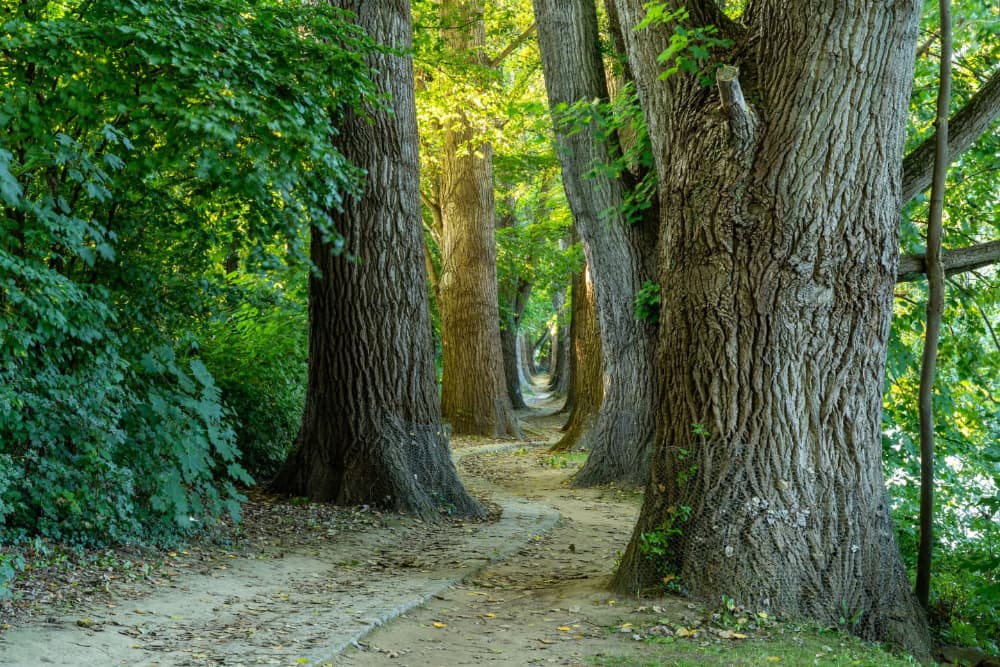15 minutes in city green space proves powerful antidote to anxiety and depression
A comprehensive global analysis of nearly 6,000 participants reveals that brief exposure to urban nature provides substantial mental health benefits, with urban forests emerging as particularly powerful environments for psychological wellbeing. The research offers evidence-based guidance for integrating green spaces into public health strategies.

Researchers from Stanford University’s Natural Capital Project have conducted the most extensive meta-analysis to date examining how urban nature exposure affects mental health outcomes. Published in Nature Cities on 30 July 2025, the study synthesised data from 78 field-based experimental studies across 20 countries, encompassing 5,875 participants.
Even brief nature contact delivers significant benefits
The analysis demonstrates that exposure to urban nature provides substantial benefits across a broad spectrum of mental health outcomes. “We are working to translate the effect size we found through this analysis to more intuitive indicators that would be useful for decision-makers,” said Yingjie Li, postdoctoral scholar at the Natural Capital Project and lead author of the study.
The research team found significant reductions in negative psychological states, including total mood disturbance, anxiety, fatigue, confusion, anger, depression and stress, with average effect sizes ranging from -0.3 to -0.95. Positive psychological states such as vitality, restorative effect and vigour showed significantly higher levels following nature exposure, with effect sizes of 1.29, 1.35 and 1.42, respectively.
Urban forests emerge as mental health champions
Different types of urban nature showed varying impacts on mental health outcomes. Green spaces generally proved more beneficial than blue spaces, with urban forests and parks demonstrating the strongest positive effects. Urban forests showed significantly greater benefits than gardens and street trees in reducing mental distress and enhancing vigour.
“Previous studies have documented strong links between contact with nature and mental health,” said Anne Guerry, chief strategy officer and lead scientist at the Natural Capital Project and senior author on the paper. “But with most studies, you either can’t infer a causal link, they can’t be easily generalized, or they aren’t designed to distinguish the effects of different types of nature. This analysis helps fill that gap.”
Young adults show heightened sensitivity to nature’s effects
The research revealed that nature exposure has the strongest effect on improving psychological outcomes in young adults aged 19-25 years compared with other age groups across 9 out of 12 mental health outcomes. Young adults experienced significantly greater reductions in total mood disturbance, anxiety, fatigue and confusion, as well as enhanced restorative effect and vigour.
This finding carries particular significance for prevention strategies, as the authors note: “The majority of all mental disorders manifest before the age of 25 years.” The heightened sensitivity of young adults to nature exposure may reflect developmental factors and lifestyle constraints, including important life transitions and limited access to natural environments.
Passive engagement proves surprisingly effective
Contrary to expectations, the study found that static activities in nature were more effective than physical activities in reducing negative mental health outcomes such as anxiety, fatigue, confusion and depression. However, both passive and active engagement showed equal benefits for positive mental health outcomes including positive affect, restorative effect and vitality.
This finding suggests that even passive interactions with urban nature, such as viewing greenery or sitting quietly in natural spaces, can provide meaningful mental health benefits. The research supports strategies that prioritise integrating green views into buildings and creating quiet, nature-filled spaces that support wellbeing.
Duration matters, but benefits start immediately
While longer nature exposure (exceeding 45 minutes) resulted in significantly greater reductions in stress and increases in vitality compared with shorter exposures, the research affirmed that even brief nature exposure yields substantial mental health benefits. Moderate-duration exposure (15-45 minutes) showed the largest effect sizes for reducing total mood disturbance, anxiety, fatigue, confusion and depression.
Global patterns reveal cultural influences
The analysis revealed interesting geographical variations, with Asian populations exhibiting significantly greater improvements in most mental health measures than non-Asian populations. The authors suggest this may reflect culturally embedded worldviews and practices like forest bathing that potentially enhance psychological responses through priming effects.
Studies conducted in high-density urban areas generally reported significantly greater mental health benefits from nature exposure compared with those conducted in medium-density cities, highlighting the particular importance of green spaces in densely populated urban environments.
Implications for urban planning and public health
The findings have direct implications for urban planning and public health policy. The research team is now incorporating their findings into modelling tools for urban planners. “For example, we could run scenarios like: if a city currently has 20% green space or tree cover, how many preventable cases of mental health disorders could be avoided if that were increased to 30%?” Li explained.
The World Health Organization recommends that every person live within 300 metres of a green space to maximise health benefits. This research provides quantitative evidence supporting such recommendations and suggests that even small “pocket parks” and additional street trees can meaningfully improve urban mental health outcomes.
With over 70% of the world’s population projected to live in urban areas by 2050, and mental health challenges increasingly prevalent in urban settings, this research provides crucial evidence for integrating nature-based solutions into healthier and more sustainable cities.
Reference
Li, Y., Mao, Y., Mandle, L., et. al. (2025). Acute mental health benefits of urban nature. Nature Cities. https://doi.org/10.1038/s44284-025-00286-y

